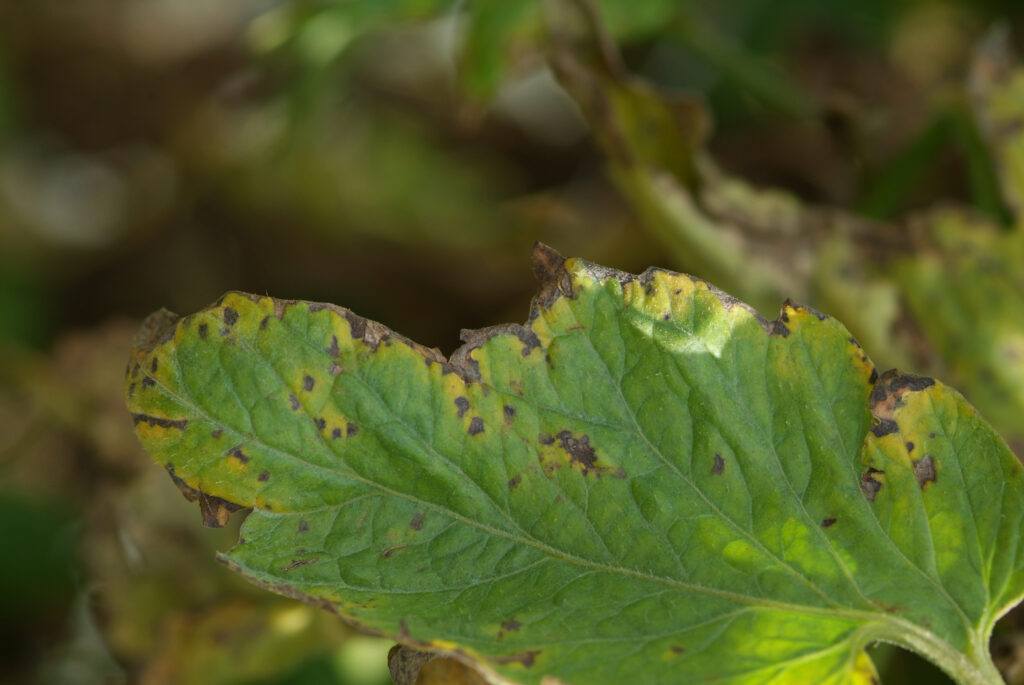Disease Management for a Strong Tomato Crop
Preventive measures are the foundation of late-season tomato disease management.

As we move into the latter part of the season, keep disease threats top of mind. While crops may not begin to show signs of disease until later in the season, early action is key to preventing infection.
Keep an eye out for these tomato diseases and make a plan to protect your yield potential.
Disease Threats
A couple of key diseases and disease carriers are likely to present themselves early in the season. Brought to plants by beet leafhoppers acting as vectors for the disease, curly top can cause real challenges for your crop. Phytophthora root rot begins to affect tomatoes about a month after planting.
The most common disease threat to tomatoes is early blight. Early blight is driven by Alternaria infections and can occur at any stage of development. Like many pathogens, the spores of this pathogen spread by wind or water splash, surviving between seasons on crop debris in the soil.
Disease Problems Posed

Each diseases pose a unique risk to yield potential in tomatoes. Diseases cut growing plants off from nutrients to nurture their own growth and overtake early-emerging plants. Defoliation caused by disease limits the leaf surface area available to photosynthesis. This can cause stunted growth, reduced quality and lower yield potential.
Plants infected by curly top can turn yellow, become stiff and stop growing, potentially killing the plant. Curly top gets its name from the first symptom that usually appears: discolored leaves that curl in at the edges.
Phytophthora root rot can also cause plant death. Brown lesions might be seen around the base, and eventually the roots can rot away and die, causing plants to grow slowly or wilt.
Early blight degrades the tissue it infects. Lost growth means the plant must divert energy to regenerate and results in a reduced canopy that may not be able to support as large a crop. Defoliation in the lower part of the plant leaves the tomato fruit susceptible to sunscald, opening the door to rot.
How to Protect Your Crop
Following through on a sound management plan drives marketable yield in tomatoes. Cultural tactics paired with preventive fungicide applications can help keep crops healthy through harvest.
Cultural practices include:
- Developing and sticking to a crop rotation program.
- Removing volunteer weeds.
- Culling infected tomatoes to reduce sources of inoculum and, therefore, disease.
- Using drip irrigation to minimize moisture on plants.
Preventive treatment can also help preserve marketable yield potential. Adding a fungicide with efficacy on Alternatia, such as Aprovia® Top or Miravis® Prime to a mildew or hopper spray can help with early control. These products also offer strong residual control on both powdery mildew and early blight.
Like any disease management program, preventive action is foundational to protecting yield and quality potential through the end of the season.
2 Min Read
- Crops may not show signs of disease until later in the season.
- Following through on a sound management plan helps protect marketable yield in tomatoes.
- Proper disease management includes a combination of cultural practices and fungicide applications.























